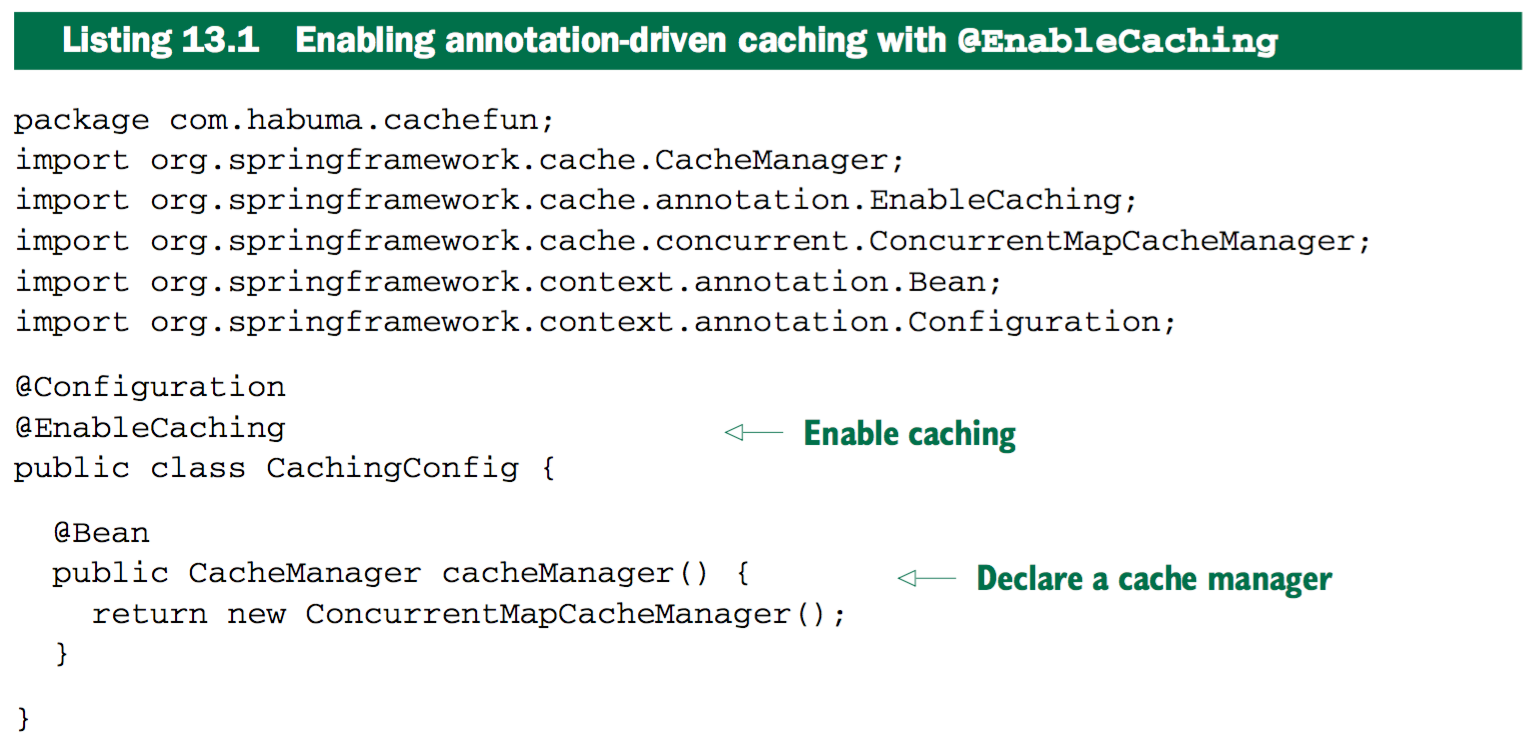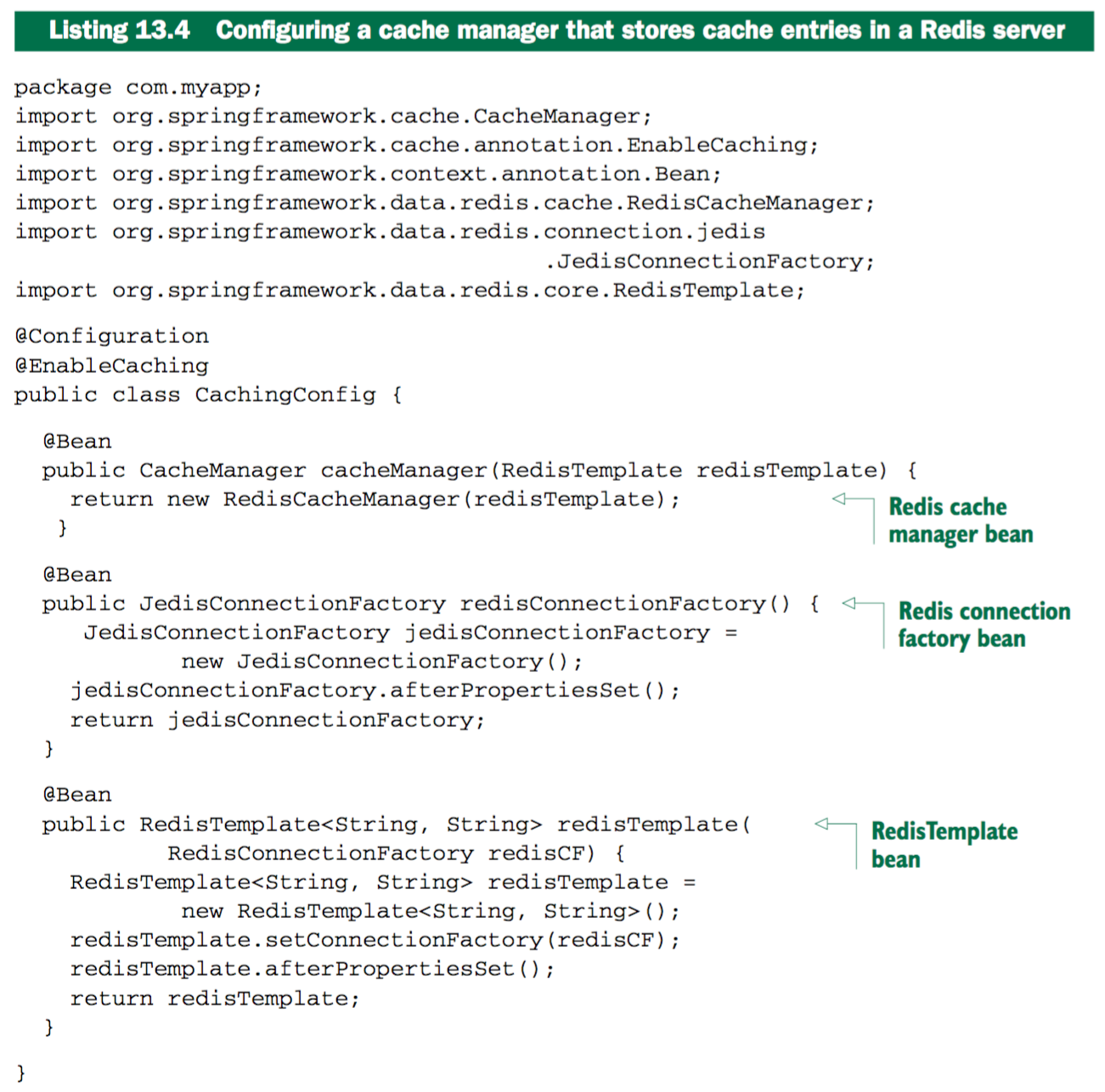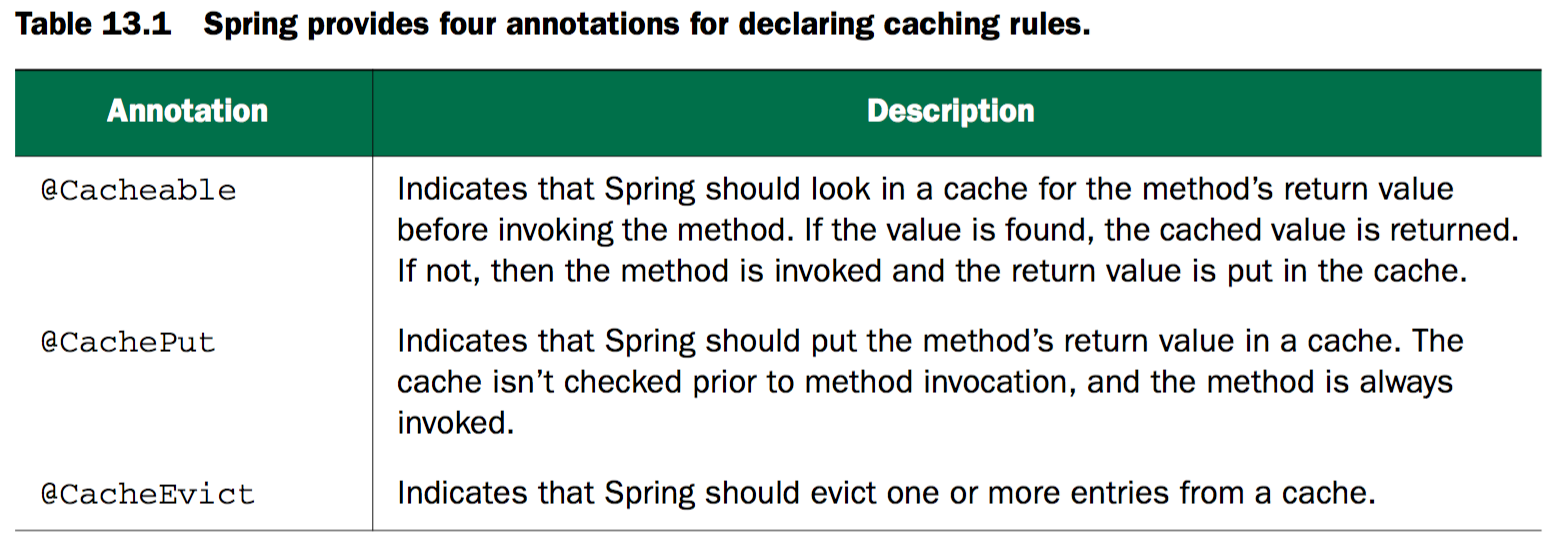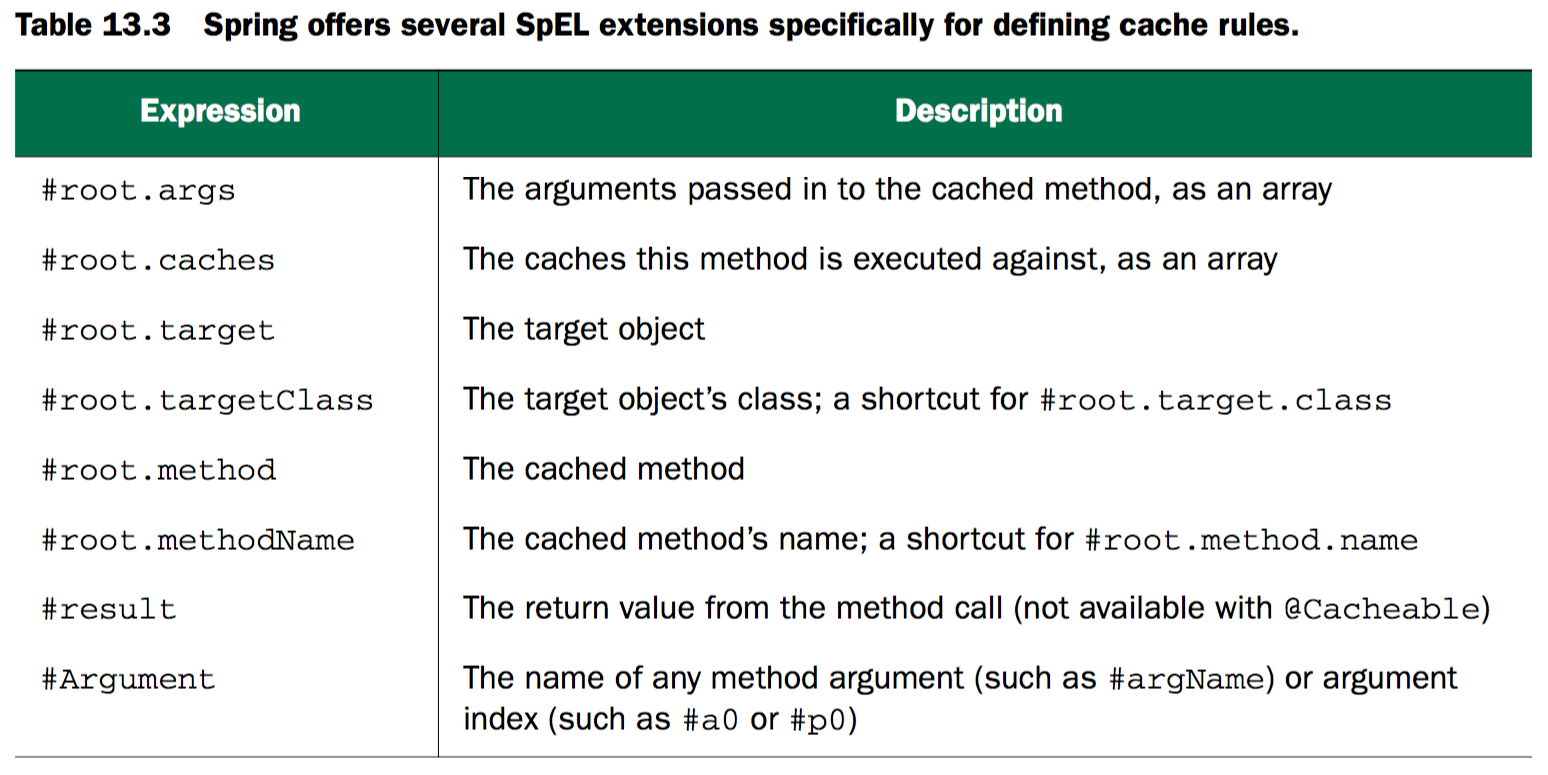13 Caching data
13.1 Enabling cache support
Spring’s cache abstraction comes in two forms:
- Annotation-driven caching
- XML-declared caching

Under the covers, @EnableCaching and <cache:annotation-driven> work the same way. They create an aspect with pointcuts that trigger off of Spring’s caching annotations.
13.1.1 Configuring a cache manager
Out of the box, Spring 3.1 comes with five cache-manager implementations:
- SimpleCacheManager
- NoOpCacheManager
- ConcurrentMapCacheManager
- CompositeCacheManager
- EhCacheCacheManager
Spring 3.2 introduced another cache manager for working with JCache (JSR-107) based cache providers. Outside of the core Spring Framework, Spring Data offers two more cache managers:
- RedisCacheManager (from Spring Data Redis)
- GemfireCacheManager (from Spring Data GemFire)
CACHING WITH EHCACHE

For example, the following Ehcache configuration declares a cache named spittleCache with 50 MB of maximum heap storage and a time-to-live of 100 seconds.
<ehcache>
<cache name="spittleCache"
maxBytesLocalHeap="50m"
timeToLiveSeconds="100">
</cache>
</ehcache>
USING REDIS FOR CACHING
To use RedisCacheManager, you’ll need a RedisTemplate bean and a bean that’s an implementation of RedisConnectionFactory (such as JedisConnectionFactory).

WORKING WITH MULTIPLE CACHE MANAGERS
CompositeCacheManager is configured with one or more cache managers and iterates over them all as it tries to find a previously cached value.

13.2 Annotating methods for caching


13.2.1 Populating the cache

可以把注解放在接口定义中,这样所有实现类都可以继承该缓存规则。
@CachePut("spittleCache")
Spittle save(Spittle spittle);
There’s only one problem: the cache key. As I mentioned earlier, the default cache key is based on the parameters to the method. Because the only parameter to save() is a Spittle, it’s used as the cache key. Doesn’t it seem odd to place a Spittle in a cache where the key is the same Spittle?
CUSTOMIZING THE CACHE KEY

@CachePut(value="spittleCache", key="#result.id")
Spittle save(Spittle spittle);
CONDITIONAL CACHING
如果unless属性表达式为true,则方法返回的值不会被缓存,如果condition属性表达式为false,则该方法的缓存被完全禁用。
区别:unless只能阻止返回值被缓存,但是缓存还是会被检索,如果找到,则返回。condition则完全禁用缓存,既不检索缓存,也不更新缓存。
As an example (albeit a contrived one), suppose you don’t want to cache any Spittle objects whose message property contains the text “NoCache”.
@Cacheable(value="spittleCache", unless="#result.message.contains('NoCache')")
Spittle findOne(long id);
For instance, suppose you don’t want caching to be applied to any Spittle whose ID is less than 10.
@Cacheable(value="spittleCache", unless="#result.message.contains('NoCache')", condition="#id >= 10")
Spittle findOne(long id);
13.2.2 Removing cache entries
Unlike @Cacheable and @CachePut, @CacheEvict can be used on void methods. @Cacheable and @CachePut require a non-void return value, which is the item to place in the cache.


13.3 Declaring caching in XML
略。